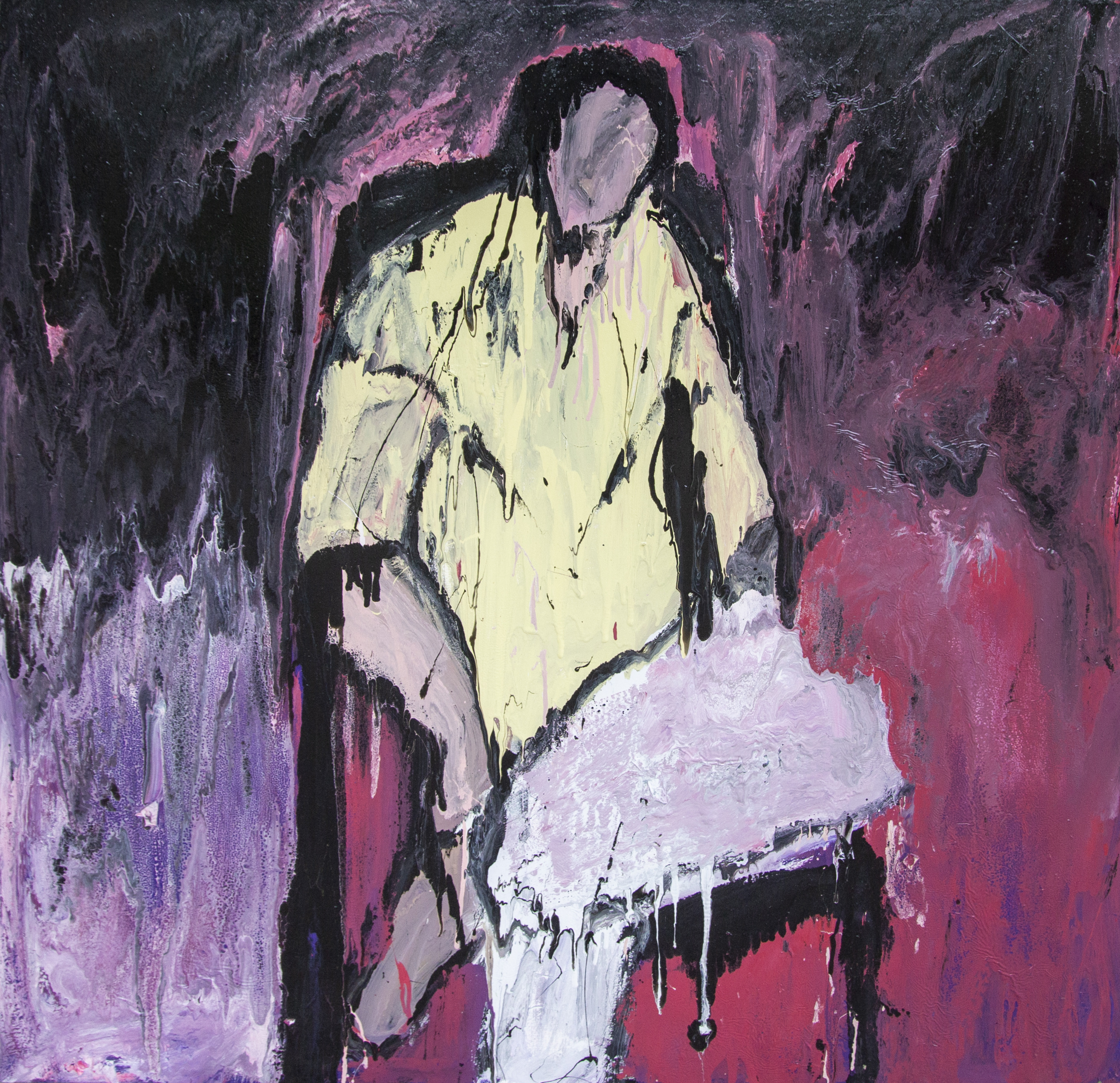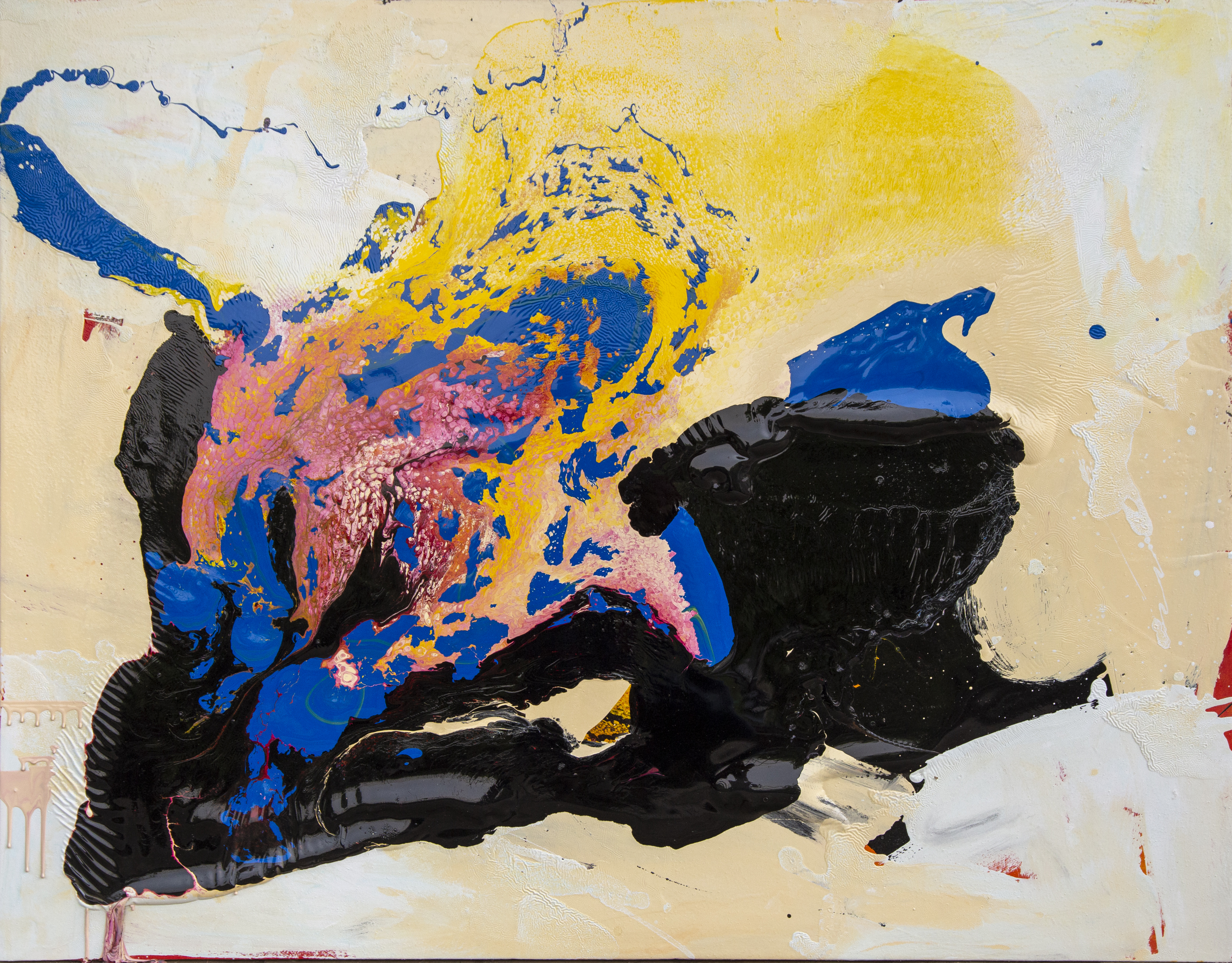The common man, having a common experience. Sitting, rather squatting on the edge of a road or road separator, waiting for transport, fatigue, anxiety of the bus reaching on time, making the connection, getting home, to a meal, to a night’s sleep. Women on the farther edge, always the concern for physical safety. The need for safety, peace of mind, security of family, home and necessities. Basic concerns, requiring basic support, but curiously enough a common man’s common concerns are not so common, considering the attention and support they get. Rather not get.
Abdullah Qureshi with a delicacy, humour and light unfolds the struggle for survival of an individual. In ‘Looking Inwards and Outwards’ he moves between the shores of what an individual is and what it means to stand on your own, in your space and individuality. The fascinating thing is that one has to grow into your individuality, into your personhood through an incredibly vulnerable period. Childhood. For all the vulnerability of the period, a lag time that requires a considerable period of time, space and resources for the intellectual, emotional and physical development. And matched with this vulnerability is an assumed protection. A protection that is hardly ever fail safe. This rather long period, not as long as life but long considering the expanse of development, search for understanding of life to a new and naïve brain and senses, struggle against inequity with a voice undeveloped and generally unheard. A long period that one is on a receiving end and yet not developed enough to clear space and lay boundaries. A perilous time, that lays its footprints for a long time to come.
Working with common enamel paint, used in painting house interiors, he paints man’s common experience. With its fluid nature, he paints the immediate experience, reflexive, gestural, a moment caught in all it messes and emotions fraught with movement and arrest. Captured over abstract landscapes are abstract emotions, emotions that rise and fall with experiences and movement of life. As he stands and faces himself, with the contents of his life, his desires and inclinations in life and looks at the landscape that surrounds him, the family, friends, customs and institutions and traditions that face him. Either constraining and rarely liberating, he faces this chasm, the bright promise of life and the dark present that pokes its darkness into a future. The artist uses thick bright colors flowing into each other much like the brightness of life and events as they flow into one another. Uninhibited and zestful, the bright green, the brilliant yellow, the oranges, pink and reds flow amidst the blues with the white and the generous demarcating effect of black. He constructs his landscapes from an intuitive and emotional plane that manages to capture the exuberant quality of the emotions. Life like the excessive narrative that is provided to it, does not occur on the rational plane, life occurs through the sense organs so generously provided by nature, sense organs do not lie, they provide the reality of a situation, hot, cold, dark, light, love, fear, the senses engaging with rational provide experiences, overwhelming in their complexity, joy and fear. Through the mess of emotions and engagement with life, some are capable of embracing it, taking in the brightness and trying to resolves the darkness.
A lived life, where the individual learns to stand for himself and face the inevitable, the unknown. A creature of comfort man gravitates towards the familiar and well worn, yet it in in experiencing the unknown that he develops, learns and engages life. And as the young adult faces choices, the internal impetus of youth providing hope, propulsion and direction and comes in contact with the older generation, in the form of teachers or parents. The voice of hope collides with the voice of fear, contraction and security. Portrayed in his bold, impetuous figurative work ‘I want to study fashion’, produces this dynamic, the vulnerable hesitance of stating a course, the stillness of the figures belied by the vibrant and unhesitating brushwork holding the extent of emotions involved in that utterance. In the desire for development, growth and courage.

No path in life is safe, but the choice to grow, develop and come into your identity requires a commitment and courage. It needs a self-recognition and self-drive, a decision to give up on certain options and respond to the calling within. It is a place of vulnerability requiring a voice of guidance and understanding, generally from a more experienced person. But that comes with a flawed assumption that an older person is automatically more knowledgeable, more mature. ‘Tree of anger ‘, paths of hued black overlaid by vivid brushstrokes of bright red. Direction is a path, anger too is a path, a highly charged state as it encounters and uncovers denial and deception. Lies that generally hold up the façade of life. Misguided advice, that leads not to your own self but elsewhere. The artist faces the struggles of identity, sexuality and the multi-layered dynamic underlying this in his work.
Resourcing Audre Lourde’s work and its highly personal narrative, the artist portrays these dynamics, a complex web of emotions, painful and sensitive colliding with dreams and hope. As the individual struggles from a very personal place, from a subjective reality of this web of feelings and emotions, the struggle of being other-ed, the betrayal, rejection and hurt, a struggle to create your own reality in a foreign land while trying to accept your creed yet weeding out the false.
Resonating with Audre Lourde, a poet addressing issues of colour, gender and sexuality, the artist references her struggles against these issues in her poems ‘Who said it was Simple’, A Litany of Survival’ and ‘Never to Dream of Spiders’, in his images and titles of work. The sheer burst of energy in ‘Releasing Dream and All Storms Pass’, the hope and quest in ‘Seeking Now’, to make a meaningful present, the doubt and uncertainty in ‘Standing on the Edge’, all the points at which the individual has to pull out from being silenced and speaking in a voice that is self-informed by personal struggles and identity. The sheer strength that it takes to pull out from the political to the personal, to be an individual, to be heard and seen.

Documented in his figurative work are the interpersonal dynamics as the individual tries to stand in his own skin, identity and sexual inclinations, the struggle against authority figures in Try something New, with intimacy in remembrances of relationship , with vulnerability and self-reflection in Conversations in the Shower and the loaded dynamic in ‘I don’t want to Police your Body’, a dynamic disguised as concern that provides a narrative ill-suited and ill at ease with reality, with the reality of a person , with whatever colour of skin, whatever sexuality, whatever size and shape .
Abdullah Qureshi’s bright work, sourced from a personal and honest space, pulls out the personal from the political and lays the individual where they belong, with their own selves.
Looking Inwards and Outwards, at the Sanat Initiative September 27 to October 4, 2022
Asma Ahmad is a freelance writer. All information and facts provided are the sole responsibility of the writer.
